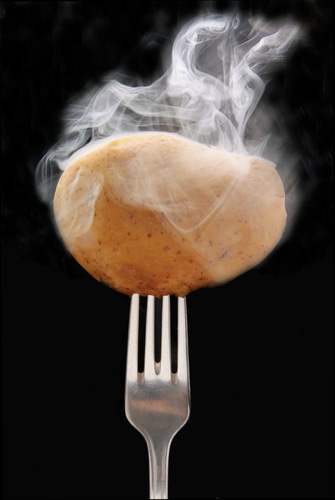Paid subscriptions are just $6 a month—get complete article coverage and access to all back issues! However, Substack has a glitch right now on the paywall and so everyone gets this issue! Enjoy
This week Health Wise Friday is all about resistant starch. I know that doesn’t sound very exciting, but stick with me here. It’s a subject definitely worth learning about—for your health’s sake if not simple curiosity.
I have written about resistant starches before, twice as a matter of fact including in the first year of HWF. But I included the information about them as an aside and in doing so I wasn’t unusual. Resistant starch was pretty much a bit player in health coverage until recently when it quite surprisingly blossomed. It is now a lead worthy of headlines and solo stories. A star was born!
Okay, first, an explanation of what resistant starch is. The definition actually is within its name—resistant. Normally carbohydrates are digested and absorbed by the small intestine. But there are certain dense carbohydrates that resist the usual breakdown and absorption there. Instead, they pass through almost undigested, making their way into the large intestine, otherwise known as the colon.
The colon is home to the majority of your microbiome and the gut microbes that make it up. Once resistant starch gets into the colon, it nourishes the friendly microbes (becoming a prebiotic). The microbes in turn ferment the starch, which produces short-chain fatty acids (SCFA). The reason we care about SCFA—and why I’m telling you about them—is that SCFA are big players in gut health. They contribute to gastrointestinal well-being, reduce inflammation and help create and maintain a thriving microbiome. The latter is crucial because the microbiome has trillions of hungry microbes.
Other benefits
Resistant starch contributes to your health in a number of other important ways.
· Because the small intestine can’t digest it, unlike other carbs resistant starch cannot add to blood glucose levels. This helps keep blood sugar under control by reducing it and improving insulin sensitivity, which especially benefits people with diabetes type 2.
· It also helps maintain healthy levels of blood lipids—fatty substances including cholesterol and triglycerides—and that helps prevent cardiac disease.
· Studies have shown that resistant starch helps prevent colon cancer.
· Icing on the cake here. The slow digestion of resistant starch keeps you feeling full longer after eating than you would otherwise and that makes it easier for you to avoid over-eating. Another bonus if you are watching your weight: foods with resistant starch have fewer calories compared to their pals with regular starch. The count for regular food starch is 4 calories per gram versus 2.5 per gram in resistant starch.
On to food …
Having completed our science lesson, we are now on to what you should eat!
Resistant starch exists naturally in a number of foods. You will get it in:
peanuts and cashews
seeds
beans including fava beans, pinto, black beans and soybeans
legumes including fresh peas
sorghum
green bananas (must eat before they ripen and turn into regular starch)
Potato starch is a highly concentrated form of resistant starch and a quick way to get the one to two tablespoons recommended per day. Use it as a thickener or add to yogurt and smoothies.
A surprising twist …
What is really intriguing is the amount of DIY resistant starch you can create in, well, starchy carbs: brown rice, potatoes, pasta, sweet potatoes, oats and barley. The trick here is that you must cool these foods after cooking them to transform ordinary carb starch into resistant starch. This requires planning ahead because the foods need to be cooled at least overnight and, even better, for 24 hours or more.
Not to worry about serving dinner cold—you can reheat all of these foods without disturbing the resistant starch levels. In fact, make life easier for yourself by cooking up a batch of them, refrigerating, and using throughout the week. I found I could chill pasta and reheat later on the stove top with a little water to re-soften the food. Another plus: freezing is also okay as a method of creating resistant starch, which makes them handy for future meals.
FINALLY, if you haven’t been eating foods naturally high in resistant starch or chilling other carbs to create it, take your time. The gut bacteria is enthusiastic about fermenting resistant starch and that produces a lot of gas. In this case that is a good thing for your health, but ease into it to avoid discomfort.
Health Wise Friday—Information and inspiration to become a stronger, healthier, happier you!





Excellent info!